Last week we took an interest in the Merriment, a Norfolk Broads tourist wherry. The year was 1919, the month August. Its passengers were the young grandparents of a Mr Rob Bruce into whose possession the Merriment’s log had fallen. Although not our Mystery Album’s mystery photographers, the story is too interesting to ignore. Rather like the man with the telescope who takes an interest in the other family, your author took the names from Mr Bruce’s log and started his own investigation.
The Merriment was a similar vessel to Mystery Album’s Palace but without the need for a paid crew. The reason being that the gentlemen aboard were navy types. Having allocated themselves rather modest ranks they set about sailing, navigating and even repairing the vessel themselves.
Mr Bruce’s grandparents were Mr and Mrs E. Leslie Champness. Their accompanying friends were the marvellously monikered Mordaunt Mauleverer Parker and his sister, Elizabeth, along with a Miss Ivy Watkins and a Miss Connie Egan.
With the important proviso that the view through the telescope isn’t always crystal clear and just because it’s written down in old records doesn’t mean it’s true, there appears to have been a long line of Champnesses involved in shipping.
In the census of 1861, Henry Champness of Gillingham appears as a shipwright. A son, Henry Robert, is 8 years old. In 1875, in the list of salaried officers at nearby Chatham dockyard both Henry Robert (by then aged 22) and another Champness, Edward Coulter, appear as draftsmen.
By 1897, not only is H R Champness the Chief Constructor at Chatham but he appears in the published table of Chief Constructors alongside his MVO (Member of the Victorian Order) 4th class, suggesting personal service to Queen Victoria.
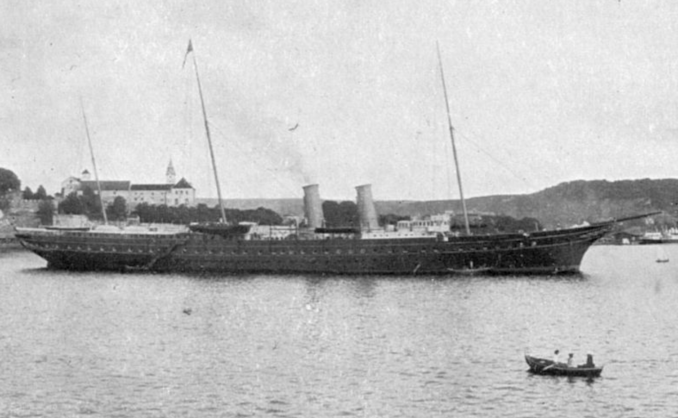
Royal yacht Victoria and Albert III visiting Christiania 1906,
Public domain
The medal was awarded in 1902, a year after Her Majesty’s new yacht, Victoria and Albert, was ready for service having been built at Pembroke Dock and launched in 1899. Designed by the Royal Navy’s Chief Constructor Sir William White, Albert and Victoria got off to a bad start when, top-heavy with cement built royal apartments, it nearly capsised after being fitted out. Sir William took a nervous breakdown. I wonder if it was H R Champness who was called in to make alterations?
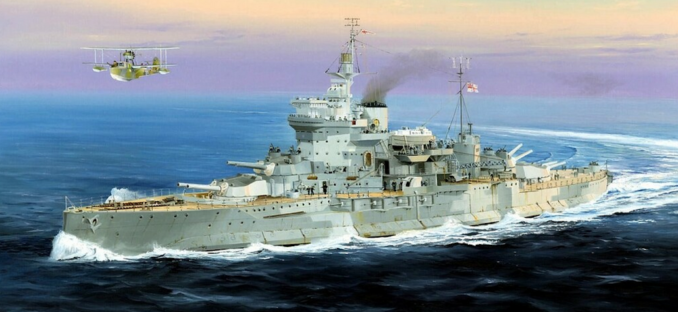
1940 HMS Warspite,
Robert Sullivan – Licence CC BY-SA 2.0
HR had a son, Charles Henry, born in 1889, who also had a distinguished naval career. Educated at Dulwich College, he became a cadet at HMS Britannia in September 1904 and served until 1935 whereupon he became Marine Superintendent to the Scottish Fishery Board. In the intervening 31 years, he had served on, amongst many others, HMS Warspite, HMS Ramillies and HMS Hood. In 1915 and 1916 he served in the White Sea and was awarded the Russian Order of St Anne 3rd Class with crossed swords, to complement his 1914-1915 Star and Victory and Allied medals.
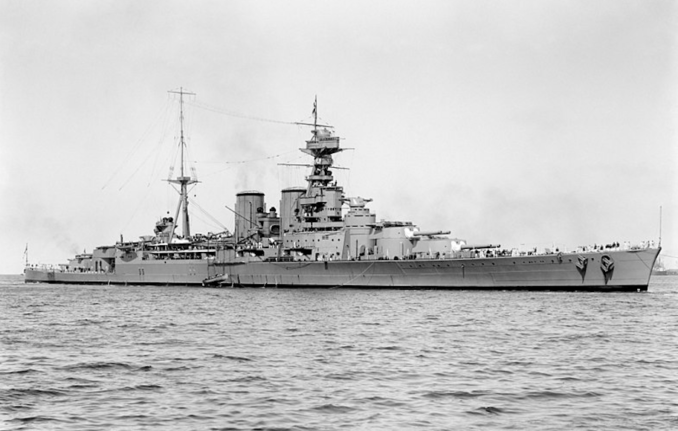
HMS Hood (51) – March 17, 1924,
Alan C Green – Public domain
At the outbreak of the Second War, he rejoined the Navy and was awarded the DSO and mentioned in despatches after being landed in Norway during 1940 – by which time he was 51. His final posting was as captain in charge of HMS Morgan RN base Kingston Jamaica.
At the end of the war, he served as Marine Superintendent to the Scottish Home Department until 1954, when he would have retired aged 65.
In 1891 Edward Leslie Champness is christened in Liverpool with his father being noted as the aforementioned Edward Coulter Champness.
Educated at Barnard Castle boarding school and Durham University, Edward marries in August 1918 and is therefore on the Merriment as a 27-year-old enjoying his first year of marriage. Mr Bruce notes him to be an assistant constructor in the Royal Corps of Naval Constructors having qualified as a naval architect at Armstrong College in Newcastle.
Edward Leslie was to have a remarkable career in industry. After his time at the Royal Corps of Naval Constructors, he became the Head of the Marine Department of Cardiff Technical College and a consulting naval architect. Between 1923 and 1933, he was Assistant General Manager of Palmers Shipbuilding and Iron Company on the Tyne and rose to be managing director of Palmers Hebburn Company.
Equally interesting was surgeon’s son Mourdant Mauleverer Parker, noted in the Merriment’s log as being a naval architect and presumably a colleague of LE Champness.
Born in 1892 in Rickmansworth Hertfordshire, by age 19 (according to the 1911 census) he was living in Tynemouth while studying as a naval architect at the Armstrong College. He boarded with a widow called Madeline Ash O’Brady-Jones in a property shared with her grown-up family and other lodgers.
Madeline was one of the Londonderry Gaussen’s, a Huguenot family whose seat was Ballyronan House in County Londonderry on the northwestern bank of Lough Neigh. Her late husband, the Rev. William Marlow O’Brady-Jones, died in 1908 having been a clergyman in Wallsend, close to the Swan Hunter shipyard.
In 1904, the Rev O’Brady-Jones was the first president of what was to become Wallsend Boys Club FC whose proteges include Carlisle United and England’s Peter Beardsley and TV pundit Alan Shearer.
The Merriment’s log notes that at 2200 hours on the 6th August 1919, while the crew turned their backs, skipper Mourdant M Parker proposed to deckhand Constance Egan who accepted his proposal.
However, Mr Bruce was unable to find any evidence of such a union during an internet search. Perhaps all was in jest or perhaps the couple hit a choppy swell in love’s difficult passage through narrow waters?
What an internet search does reveal, is that Mourdant married Antonietta Sarra Jardim, 5 years his senior, early in 1921, in Marylebone London. In old money, Miss Jardim was a native of Madura in Madras, Tamil Nadu, in Southern India on the Bay of Bengal. More recently, in 1998, Madras was renamed Chennai.
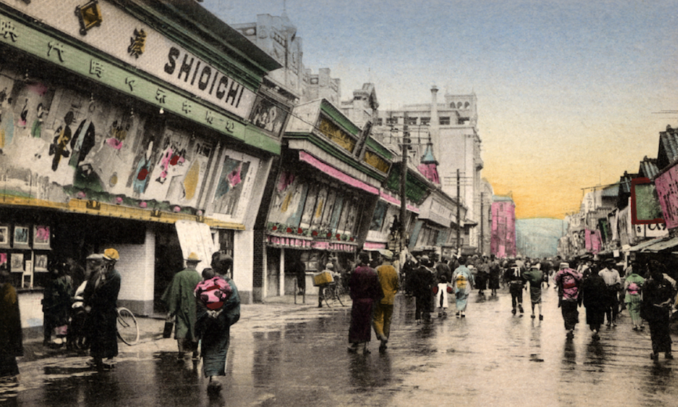
Shinkaichi theatre street in Kobe ,
Old postacard – Public domain
Mourdant and Antonietta had a daughter, Katherine Gloria, born in Leicester in 1928. The three of them are mentioned in dispatches in early 1938, walking up a Japanese gangplank to the MS Heiyo Maru in Kobe en route to San Francisco where they arrived on 22nd March. Marked down in immigration papers as residents of Kobe, correspondence between Mr Parker and Lloyds of London suggest that he was a naval surveyor in the important Japanese port. Before the war, Kobe was a major naval base and home to the Mitsubishi, Kawasaki and Sanko shipyards.
MS Heiyo Maru was built in 1940 for the NYK Line (Nippon Yusen Kaish) and was a 9800t cargo and passenger ship. Used as a submarine tender in the war, she was sunk by a torpedo from an aircraft at Truk in 1943 with the loss of 944 lives.
She had two sister ships. Hie Maru was also a submarine tender and suffered the same fate in the same place as Heiyo Maru the previous year.
The third of the class was Hikawa Maru which spent the war doing round trips of southeast Asia, including occupied Singapore, as a hospital ship. Hikawa Maru has survived and is open to the public at Yamashita Park in Yokohama.
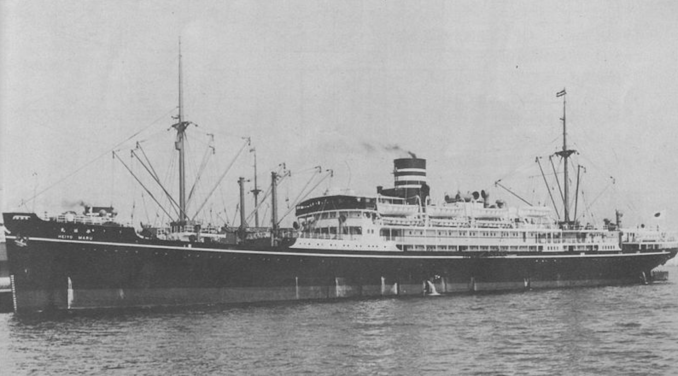
NYK Line “Heiyo Maru”,
Unknown – Public domain
Katherine Gloria visited the United States again in 1946, crossing the Atlantic on the Drottningholm out of Gothenburg. The then 18-year-old Katherine is logged as a student and her contact address in the United States is with a friend, Hubert Graves, at the British Embassy in Washington DC.
At the time, Hubert Graves was the 52-year-old counsellor at the British Embassy. Perhaps a family friend rather than a personal friend? Graves’ diplomatic career was to progress to Minister to Vietnam, Cambodia and Laos before becoming become Her Majesty’s Ambassador to South Vietnam.
The signature on Katherine’s manifest, showing her to be in a fit mental and physical condition to enter the United States, is that of ship’s master John Norlander of the Swedish American Line.

Svenska Amerika Liniens faryg S/S Drottningholm.,
Nordisk Familjebok – Public domain CC BY-SA 2.0
During the war, Captain Nordlander and Drottningholm crossed the Atlantic with all lights blazing and “Diplomat – Drottningholm Sverige” painted on the sides in big letters. The vessel carried disabled persons, concentration camp victims, diplomats, prisoners of war and displaced civilians across the Atlantic to safety in America.
Altogether Captain Nordlander made 532 crossings of the Atlantic both in peace and wartime. In 1956, he was awarded the Sea Gallantry Medal by the Queen after coming to the aid of the Argobeam, a stricken cargo ship listing after an engine room fire.
As well as for naval architecture, Mourdant Parker used his astute eye and skilled hand artistically. Pictured here is his Belfy and Corner Tower, circa 1920s, described by the auction house as, “Two woodcuts on paper, both views of ancient Chinese architecture”. I bet it isn’t. I bet it’s Kobe in the 1930s. Look at the ships in the bay. Mr Auctioneer, do your prep.
Here’s Mourdant’s Dover castle and a blitz street scene with church tower. Beautifully crafted in a realistic style, in the mad world we live in they go for tens of pounds while unmade beds and bad graffiti sells for millions.
What interesting and well-connected people!
Keeping in mind the Merriment wasn’t as posh as our Mystery family’s Palace, prepare for more surprises in the weeks ahead.
© Always Worth Saying 2021
The Goodnight Vienna Audio file



